One of the world’s great museum entrances has to be the Altes Museum in Berlin. Stone eagles sit in a row above the entablature, and 18 ionic columns line the portico. A huge granite basin sits in front. This was the king Friedrich Wilhelm the thirds idea, and his architect Schinkel realised it. Built by 1830, it was a relatively recent idea that the middle classes, newly confident, should have access to great culture.
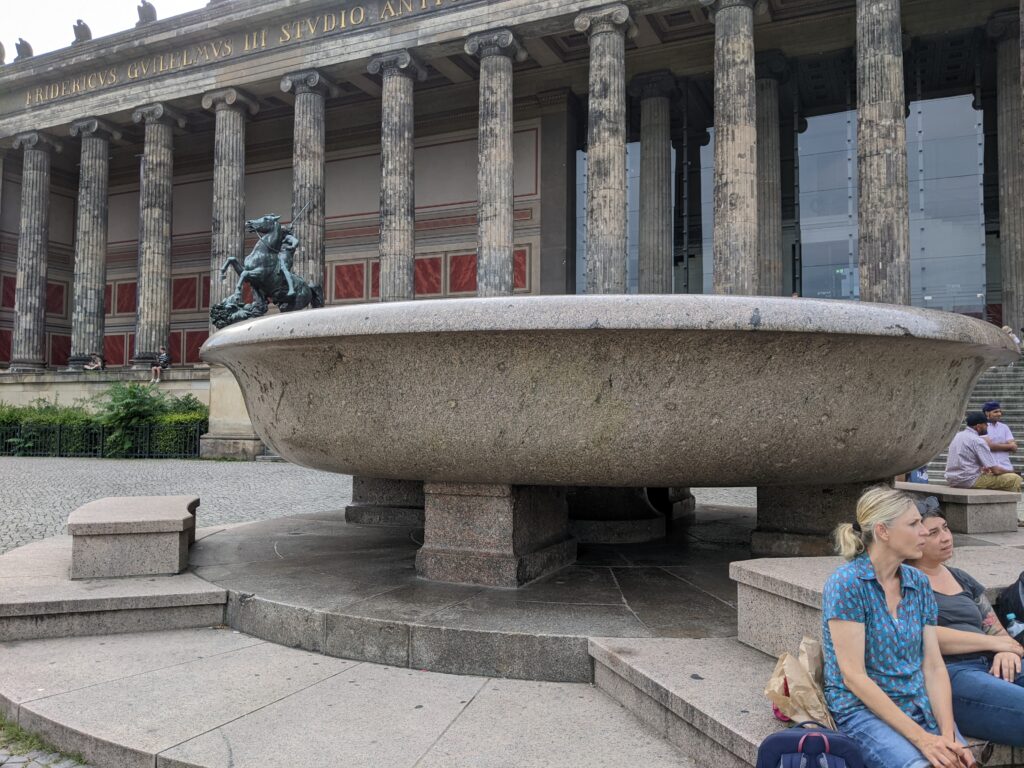
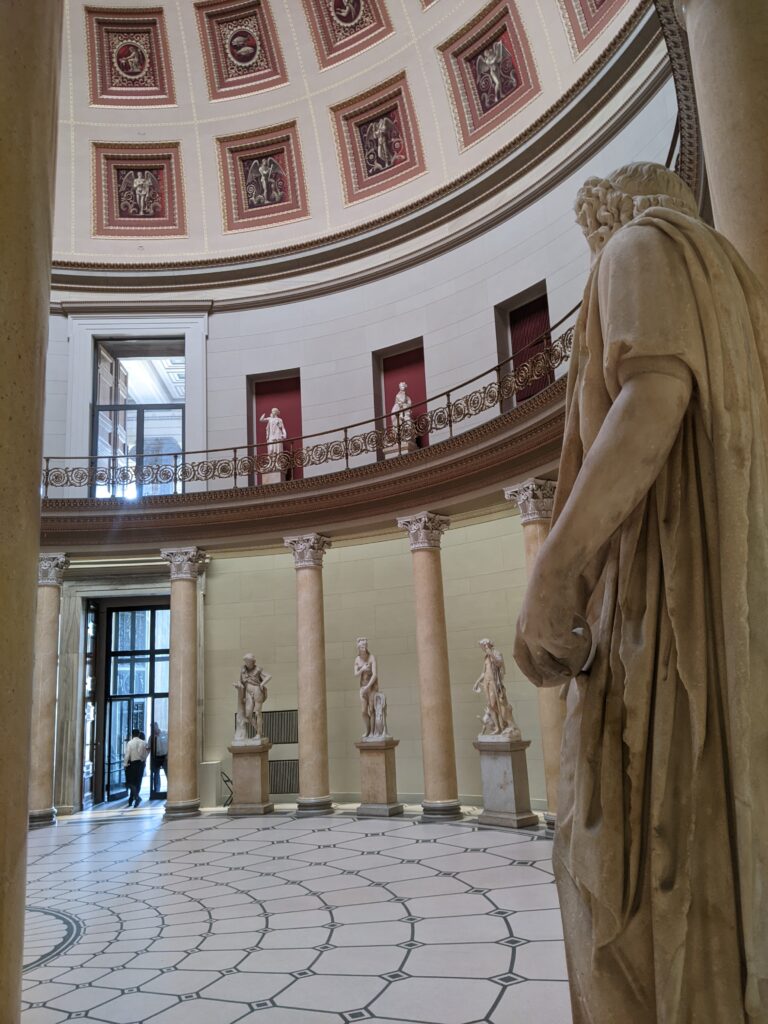
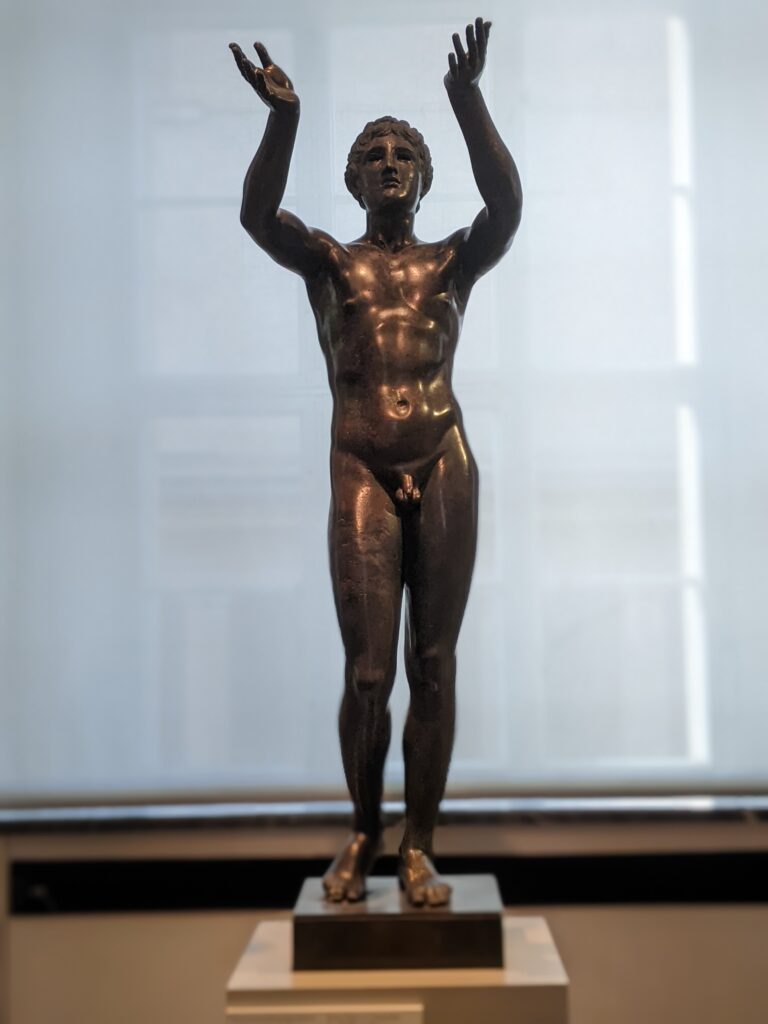
The ‘boy praying’ statue is from around 300 BC, and was found in Rhodes. By 1503 it had ended up in Venice, and then cycled through the hands of aristocrats around Italy, was owned by Charles the first in England at one point, and by French royalty later. Eventually Fredrich the Great had it at his palace in Potsdam where he could see it from his desk in his study. Luckily in a more democratic century it is accessible to all of us plebs, if you make it to Berlin.
The Neus Museum next door was the idea of the next king, Wilhem the fourth. It was badly hit in the war, and rebuilt in part, leaving the bullet holes on the outside, in the early 2000s.
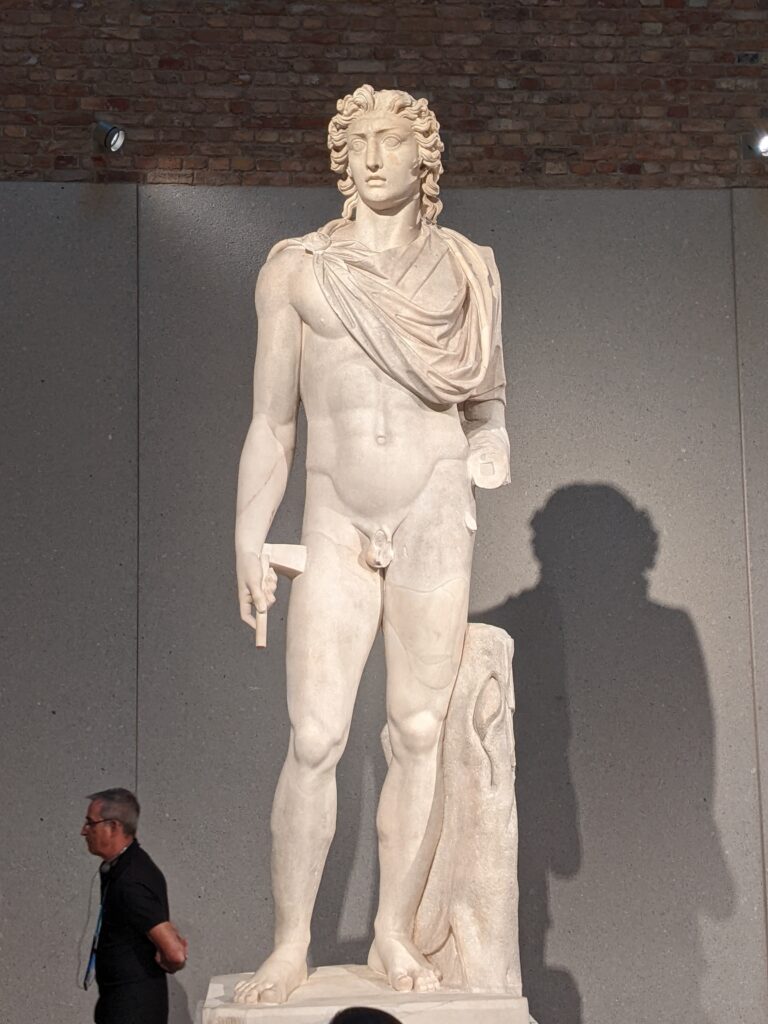
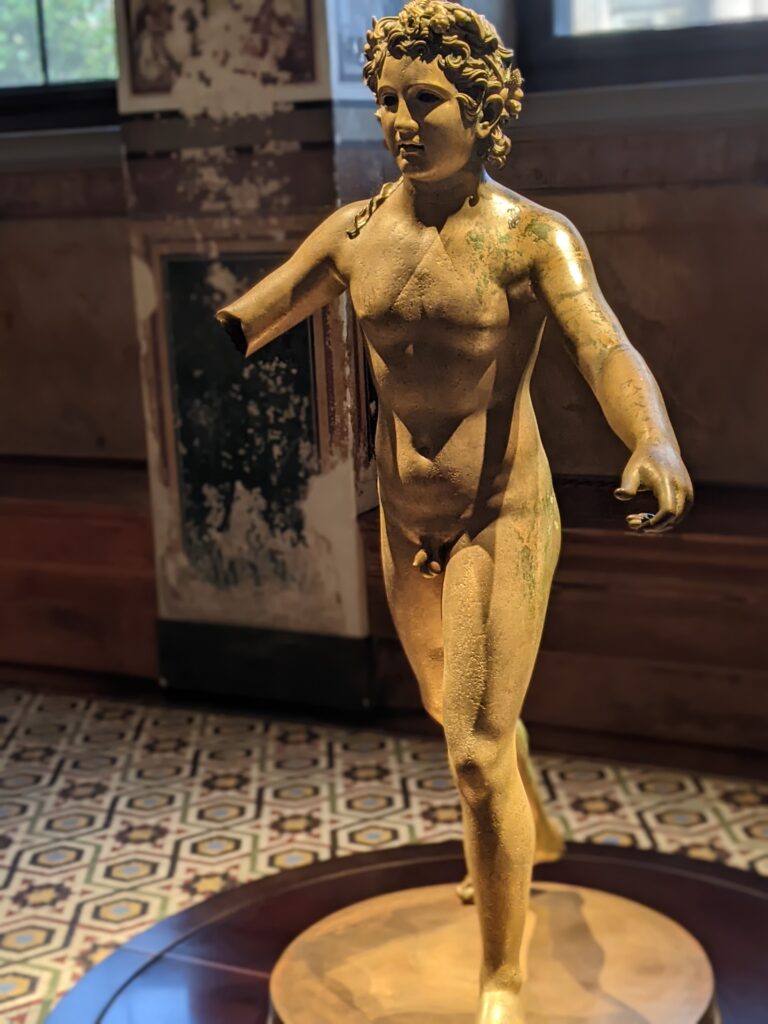
The sculpture above, Xanten Boy, was found by fishermen on the banks of the Rhine river near Xanten in southern Germany in 1858. He wears a crown of grapes, flowers, pomegranate and fruits of the field. He would have been present holding a tray at a Roman banquet. He probably comes from the first century AD. Perhaps he was dropped into the river when someone had stolen him and was making off. Imagining the bronze sculpture in place in a Roman banqueting room you start to get an idea of how old is the idea of presenting beautiful food and drink to one’s guests as a gesture of abundance and celebration.